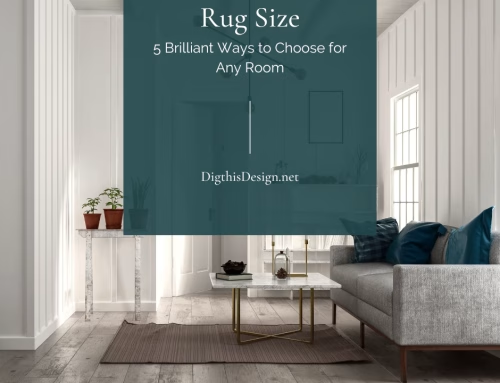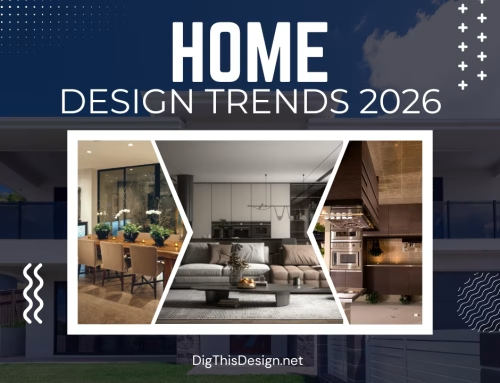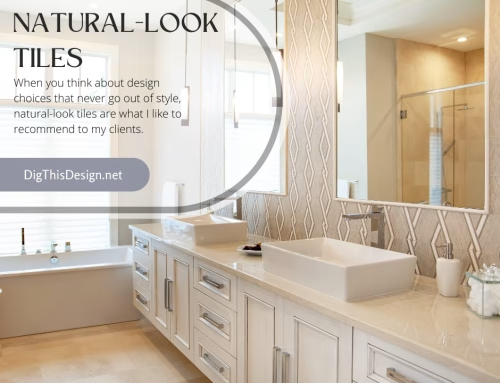The first week in a new home is a strange in-between space. Boxes sit like question marks. Rooms echo. The refrigerator hums with nothing inside but possibility. During this short and crucial stretch, the choices made begin shaping how the space feels and functions. This is where interior design priorities come into play, an anchor for the week when home comfort and control need to return in equal measure.
Tips for Your First Interior Design Priorities
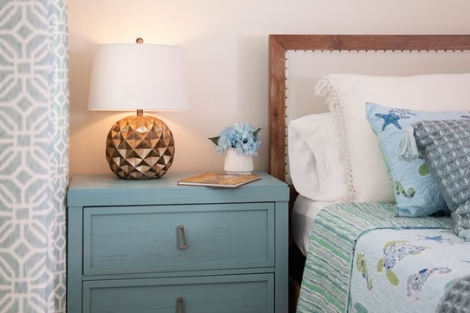
Design by Patricia Davis Brown Designs, LLC.
The Calm Before the Color
Before buying anything new or hanging anything up, the first move is observation. The space speaks in small ways: the angle of the morning light, the echo in the hallway, the way the kitchen smells after unpacking. These are early indicators of how to arrange and inhabit the space. People tend to rush into decorating, yet the first few days should be filled with stillness. Furniture can wait; rhythm cannot.
Walk around barefoot. Open all windows. Let natural light show what’s too dark or too cold. Interior comfort often depends less on furniture and more on circulation, how the air, light, and sound move through the rooms. Some people even sleep in different rooms during the first few nights to feel how they change throughout the day. This small experiment helps define comfort zones long before the sofa arrives.
People often rush to decorate.
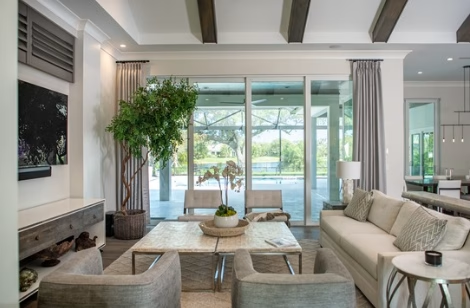
Design by Patricia Davis Brown Designs, LLC.
Function First, Then Form
Every home has a pulse, and it starts with the routines that happen daily. The morning coffee route. The path to the bathroom. The chair that becomes the laptop corner. Setting up these basic routes creates a sense of belonging. Practical choices, like placing a small lamp near the bed or setting up a temporary dining spot, allow the house to start breathing.
This stage may sound dull compared to choosing paint swatches, but it builds stability. A lamp that switches on with a tap can ease a midnight search for the bathroom. Hooks near the entrance prevent bags from collapsing on the floor. These small adjustments reduce stress more than any art piece on the wall.
Some movers list this phase under the things to do right after relocation, but it holds more emotional weight than the phrase suggests. Function is a quiet caretaker. It makes a space usable before it becomes beautiful. Once that foundation exists, color and personality can follow easily.
Furniture as Compass
The first week is a good time to resist the furniture store impulse. Instead of filling space, measure it with patience. The emptiness offers clues. Where do you pause naturally? Which corner draws you? Furniture should support those instincts.
Temporary setups often help reveal the right proportions. A cardboard box can stand in for a coffee table for a few days. Folding chairs work fine until real seating arrives. Consider renting furniture at first until you are ready to commit. These improvised choices teach how the room truly operates. Once you replace them, every purchase feels certain rather than experimental.
A good trick: focus on anchor pieces first, the bed, the sofa, and the table. They guide the flow of the room. Once placed, the rest tend to orbit them naturally. The goal is to give shape to movement rather than decorate stillness.
Walls That Wait
Paint can wait, too. So can art. A white wall may feel sterile, but it also offers time to study light. Some corners might call for deeper tones once the furniture settles. Other walls may never need anything. Many people make the mistake of painting too early, before seeing how color interacts with daily rhythm.
In the first week, lean into neutrality. Tape up a few photos or test color swatches, but keep permanence at bay. The act of waiting builds precision. A room changes once curtains go up or lamps cast evening light; what felt right in daylight may shift completely after sunset. Let the home reveal its best shades naturally.
Lighting: The Silent Sculptor
Lighting controls the mood more than any other object in a house. It defines edges and shapes, quiet corners and lively ones. During the first week, lighting should be flexible. Lamps on extension cords, floor lights in hallways, or even string lights can provide temporary illumination while helping to map future placements.
Experiment at night. Walk through each room with the lights off, then on. Notice where shadows sit and how the brightness falls. This helps decide where permanent fixtures should live. A kitchen may need brighter tones and a layered lighting approach, while bedrooms thrive on softer glows. Think of lighting as movement – morning brightness, evening calm. Each shift defines routine, emotion, and focus.
The Sensory Setup
Interior design starts long before the final décor decisions. Smell, sound, and texture matter as much as layout. Burn a candle, open a new bar of soap, or set up a simple playlist that runs softly in the background. These details set sensory boundaries. They turn the blankness of a new home into a place that greets rather than confuses.
Even cleaning can play a role here. The smell of fresh sheets or lemon-scented countertops adds memory to surfaces. A tidy corner creates calm. Every sensory cue rewires the space from “new” to “familiar.”
In this stage, the house starts whispering back, showing which habits belong here and which don’t. This is how early interior design choices begin to mold emotion into structure.
Establishing the Heart
Each home has one central area that becomes the social pulse. For some, it’s the kitchen counter; for others, a couch that fits two people and a cup of tea. Finding and shaping this heart is a key moment during the first week.
Once the central zone forms, everything else organizes itself. The heart defines how sound carries, how people gather, and how the house feels alive. Add a rug to anchor it, a lamp for evening warmth, and maybe a plant or two to test how the space breathes. This core doesn’t need perfection – it needs warmth and accessibility.
Every home has a central social spot.

Midweek Momentum
Around day four or five, unpacking slows. The urge to decorate grows. This is where the second use of interior design priorities becomes essential. The checklist should pivot from survival to identity. What colors feel natural now that routines exist? Which rooms still echo, and which hum with activity?
Small updates, like hanging curtains or swapping temporary bulbs for warm-toned ones, add satisfaction. But avoid overcommitting to major decisions. The space continues to evolve for weeks. Momentum should build gently, through one precise improvement at a time.
You might discover that the best décor choices have nothing to do with purchases. Sometimes moving a chair closer to a window changes everything. Sometimes clearing a corner reveals a new way to live in it.
Settling the Edges
By the end of the week, the boxes disappear, and so does the chaos. Each surface begins to carry its own intention. Even small gestures, fresh towels, a bowl of fruit, the first photo framed, signal completion. This phase doesn’t end the process but gives it rhythm. The home feels both stable and adaptable. There’s still work ahead, but now it carries clarity rather than confusion.
In this closing stretch, interior design priorities act less as a list and more as a mindset. They remind us that beauty grows through function, that comfort arrives through rhythm, and that the first week, while brief, is where a home’s entire personality begins to take form.

